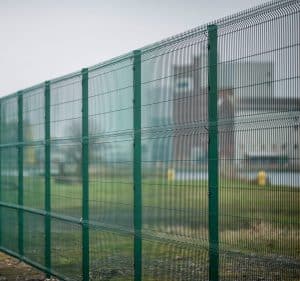Ten Ways to Keep Control of Fencing Costs
9th February 2015

In recessionary times it is necessary to be careful with budgets, yet there is also rising acquisitive crime. For companies wanting to install fencing, either for security or other reasons, the time is ripe to consider how to keep control of costs for fencing and related security measures. Here are ten things to consider when specifying fencing, all of which will help to reduce costs considerably but without compromising security.
1. Why do you need a fence?
This might seem an obvious question to ask, but fences can be used for simple boundary demarcation or to improve security or aesthetics. In many cases the requirement is for a combination of these. But if you do not consider this question, you could end up paying for something you do not need. For example, a retailer wanting to prevent the theft of vehicles or trolleys could consider hoop barriers or knee rails; both of these are simple and effective for the intended purpose, yet neither creates an obvious visual barrier or costs as much as some types of fencing.
2. Risk assessment of fences or barriers
Having identified the need for a fence or barrier, the next step is to undertake a basic risk assessment. This should identify the specific threats against which you are seeking to provide protection. For example, do the threats relate to terrorism, arson, theft or vandalism?
3. Match the fencing solution to the problem
The risk assessment will quantify the risks and enable you to identify the best type of fencing for your needs. Do not simply look to see what your neighbours have installed, as they might have different needs from you or they may have installed the wrong type of fencing!
4. Fine-tune the fencing
It is a mistake to assume that the risk throughout your site is uniform and you need to install the same type of fencing everywhere. There may be some areas that do not need any fencing at all and others for which a lower-specification, less expensive type of fencing will be sufficient. If there are a small number of particularly vulnerable areas, it may be that additional security measures here could enable lower-specification fencing to be installed elsewhere, leading to an overall cost saving.
5. How high a fence should be?
Having decided on the type(s) of fencing required, you need to specify the height(s). This is important because higher fences make it more difficult to climb or pass stolen goods over. And theft is not just something for retail outlets to consider; regrettably, theft by employees at other business premises can be a problem (this risk should be quantified in the risk assessment – see above).
6. Do not judge a fence by its appearance
It is important to understand that different types of fencing can be more secure than others, and appearances can be deceptive. For example, palisade fencing has a high visual impact and is very effective for the right purposes (eg deterring vandals) but it is poor at deterring or delaying thieves.
7. Controlling access
Access points will be required and you should remember that the best fence is only as secure as its gate(s). The number of access points should, therefore, be minimised and the security of the gate(s) and the access controls need to be adequate. If the gates cannot be secured then the fencing will not perform well as a deterrent.
8. Fencing Installation
Always contact a number of professional installation companies. Check their backgrounds and find out whether their workers are properly trained (all of the installers employed by Procter Fencing Systems are CSCS accredited). Furthermore, do the installation companies work to recognised quality standards, such as BS EN ISO 9001:2008 and BS 1722, the standard that covers most fencing products?
9. Compare like-for-like in fencing
When comparing quotes for fencing make sure that the products are the same; for example, it is easy to substitute a lighter wire or pale, but this will have an effect on the performance and longevity of the fence.
10. Consider the cost of fencing
If the cost of the fencing seems prohibitive, look back at the risk assessment and the risks that you quantified. If you were to delay installing the fencing, consider the costs associated with those risks, such as a major theft, vandalism or arson. Fencing is a very cost-effective form of insurance and one where savings can be made (in the right places) without reducing the level of protection.
Contact Procter Fencing Systems for more information about perimeter fencing by emailing [email protected]
